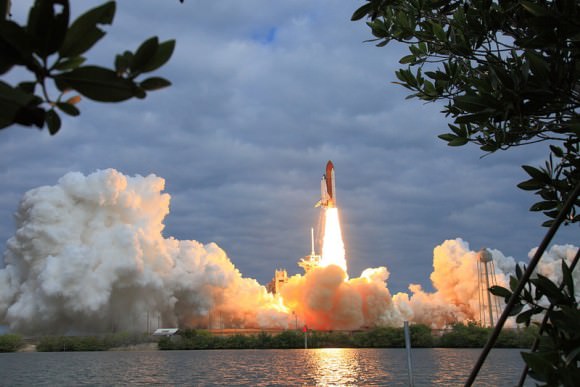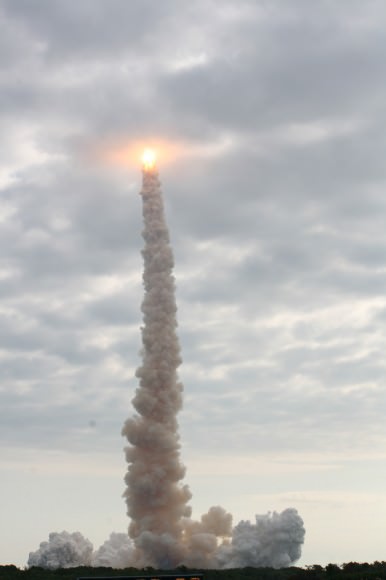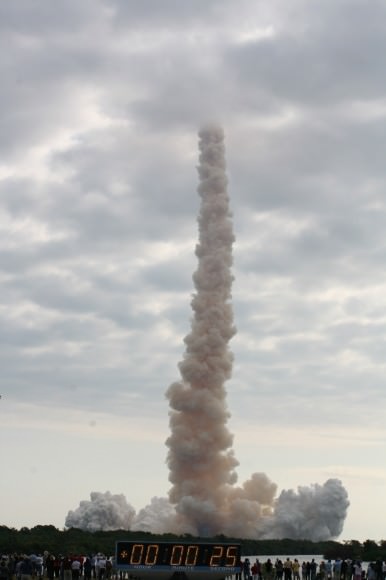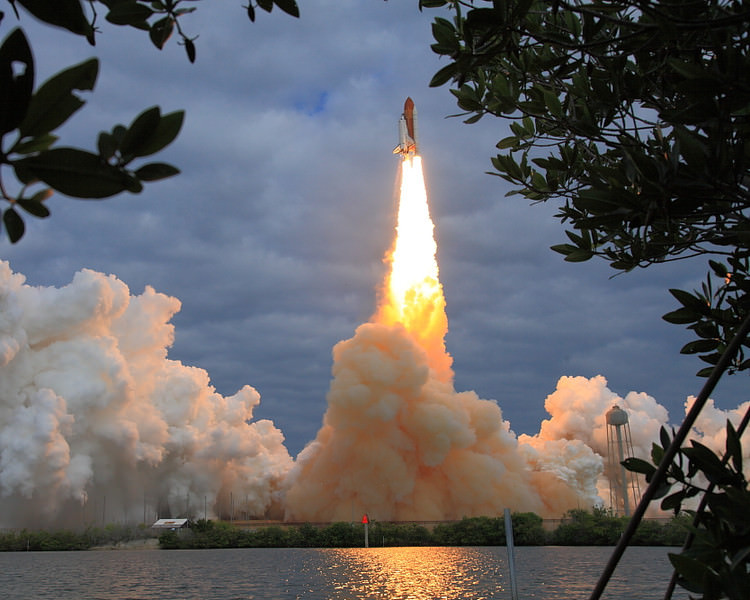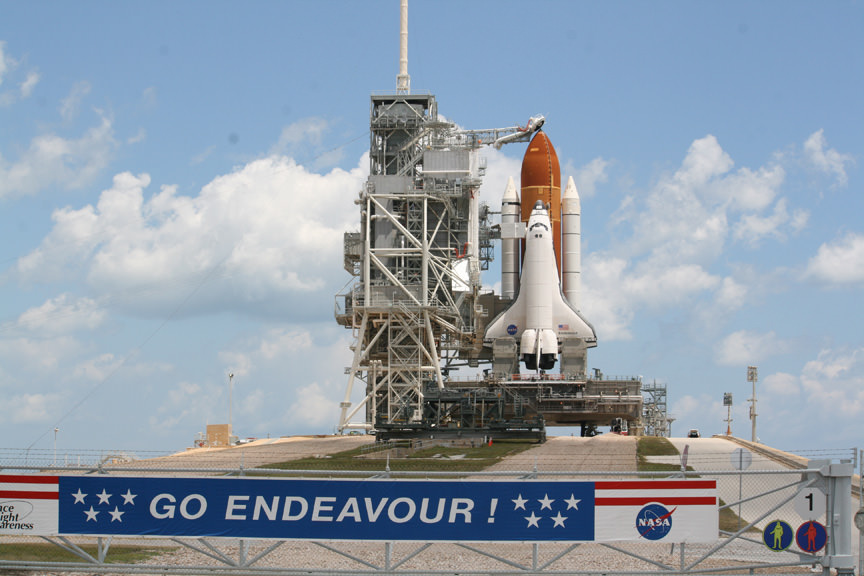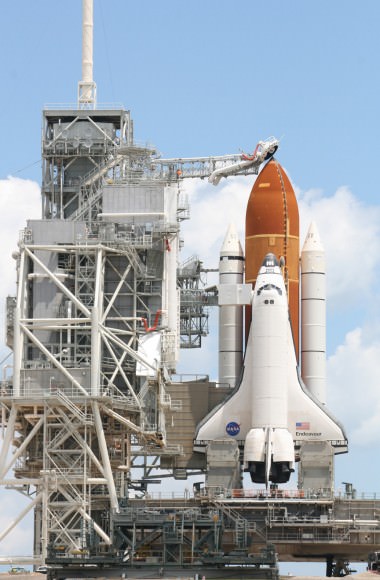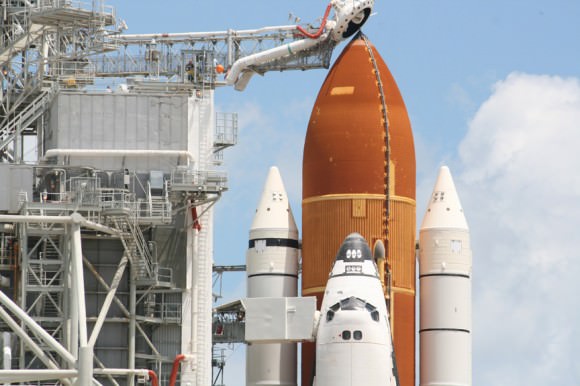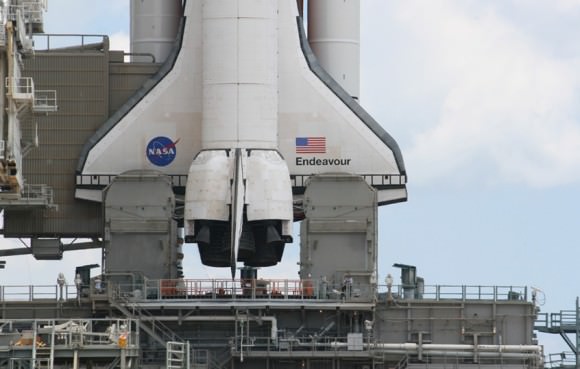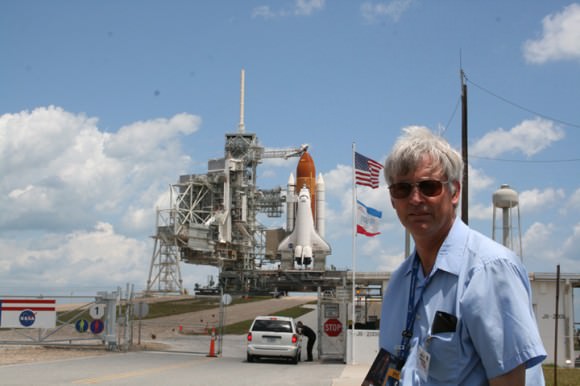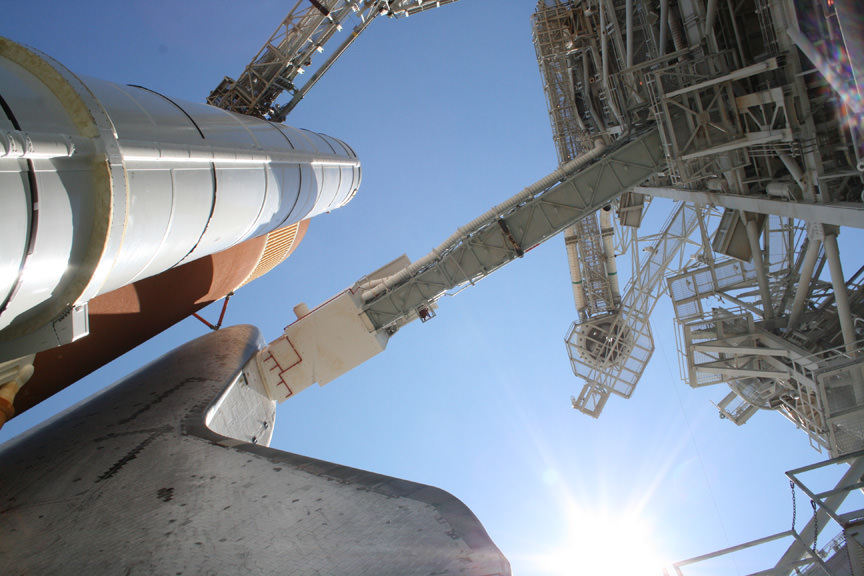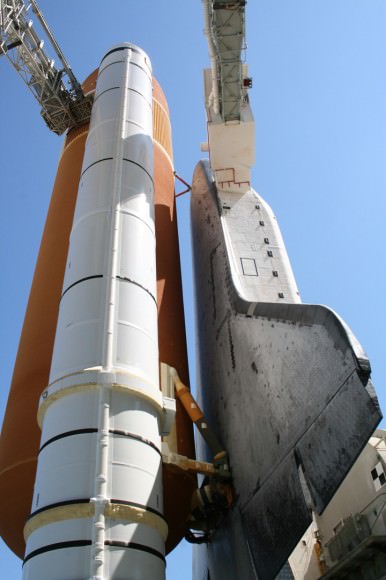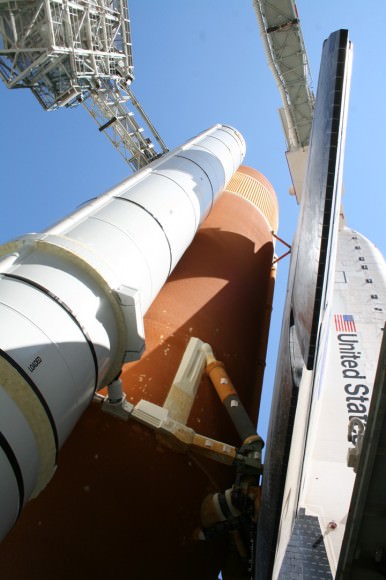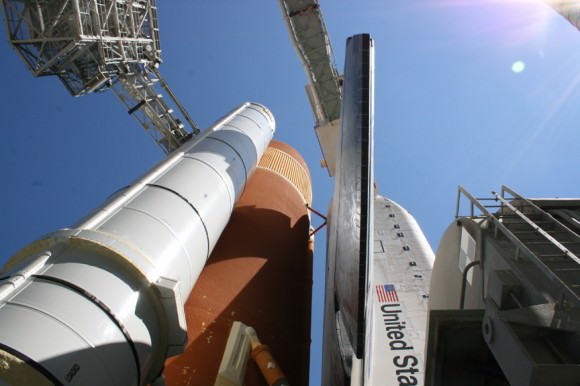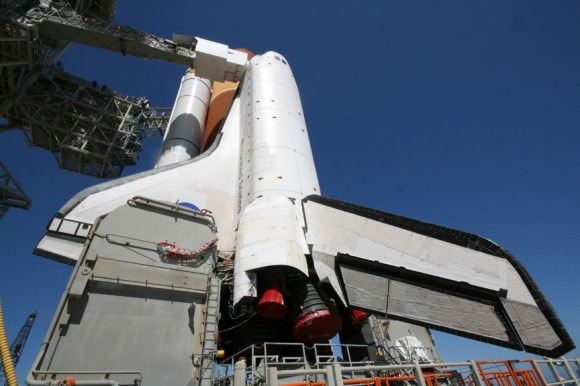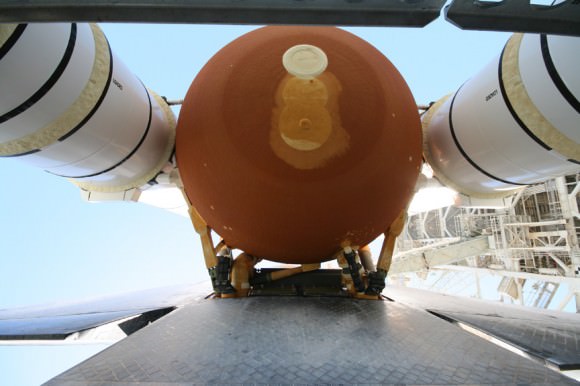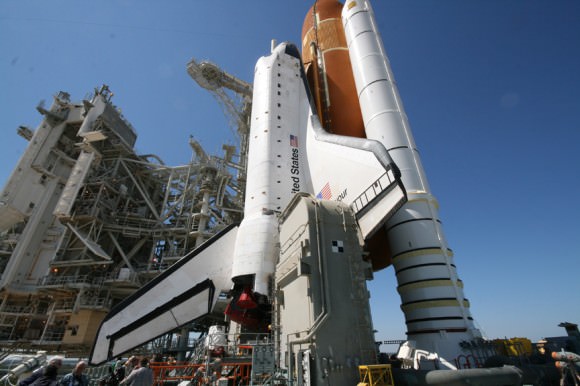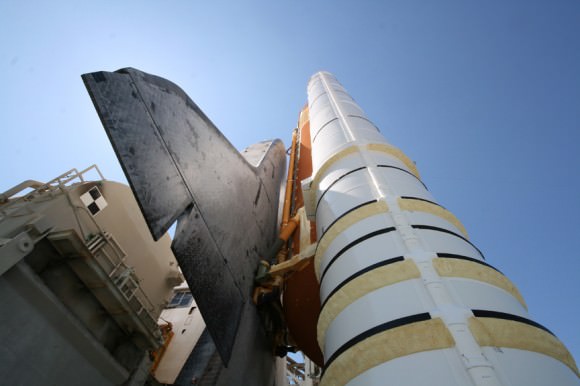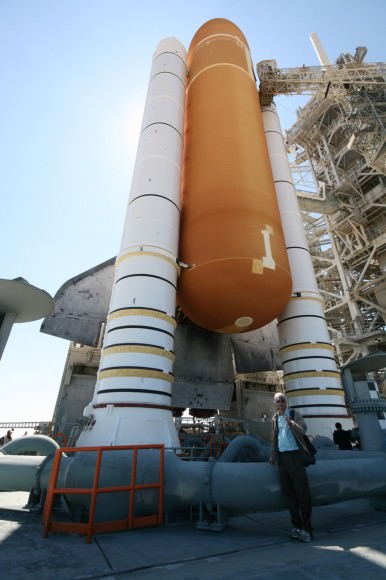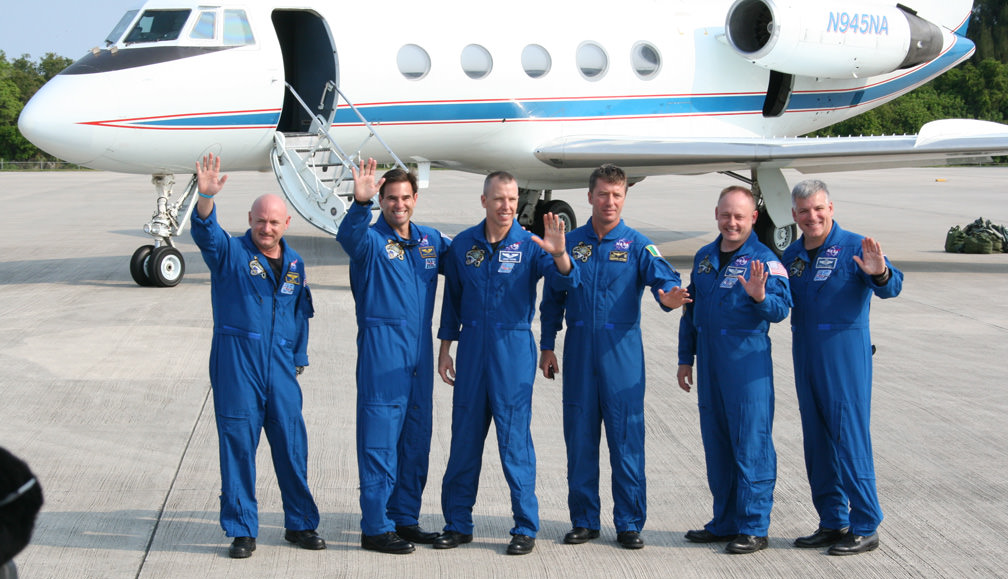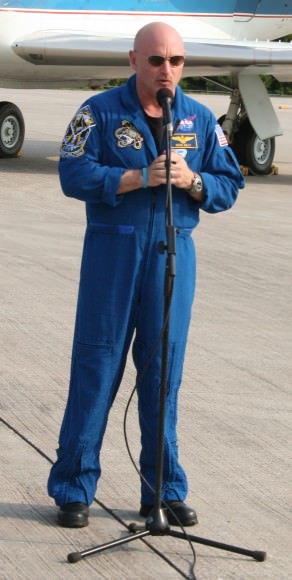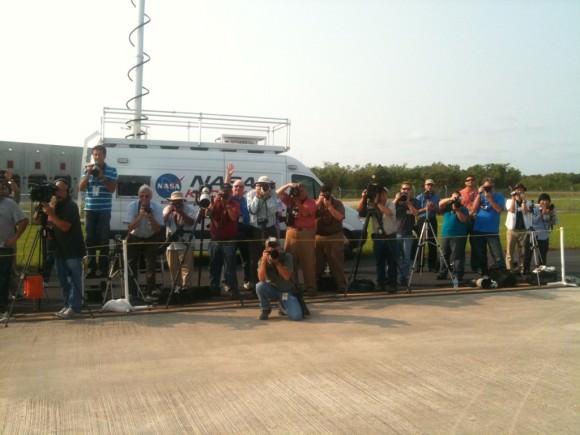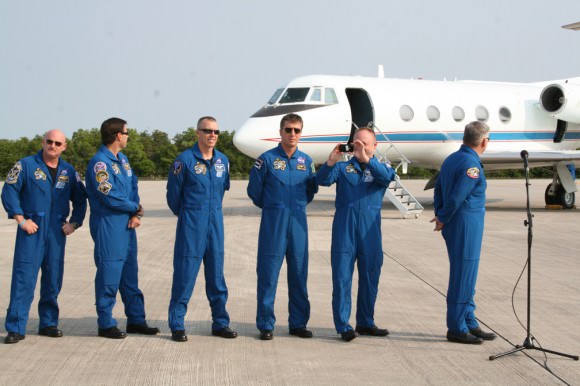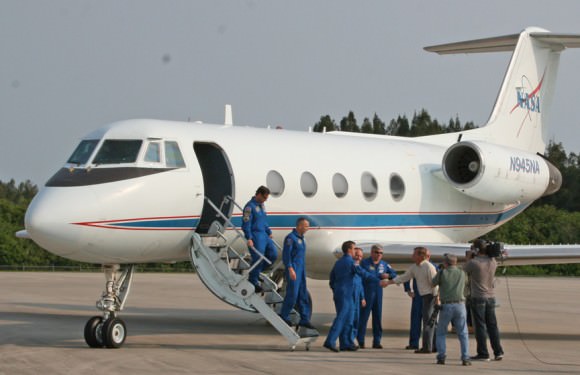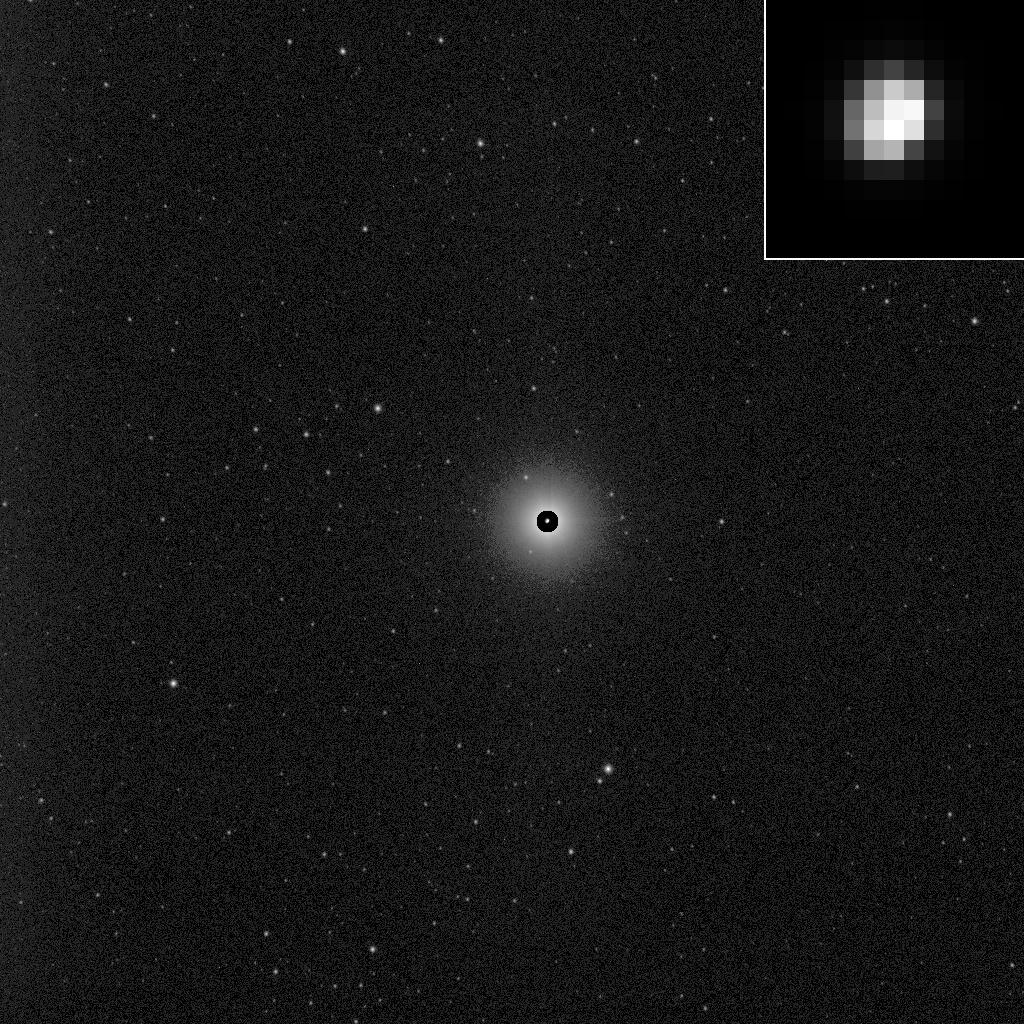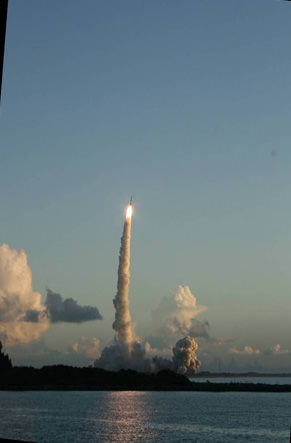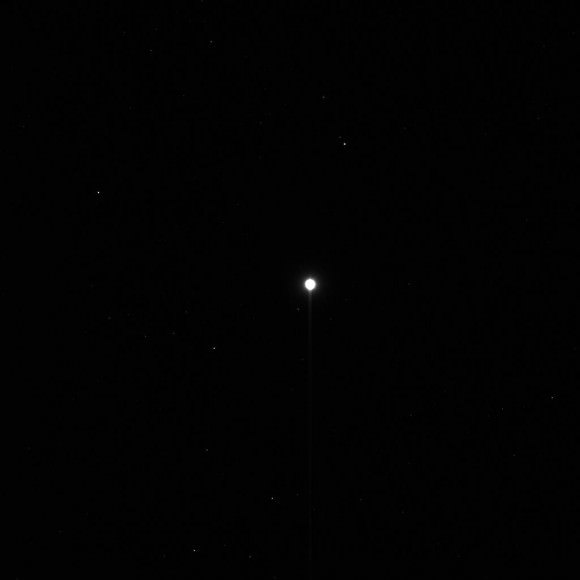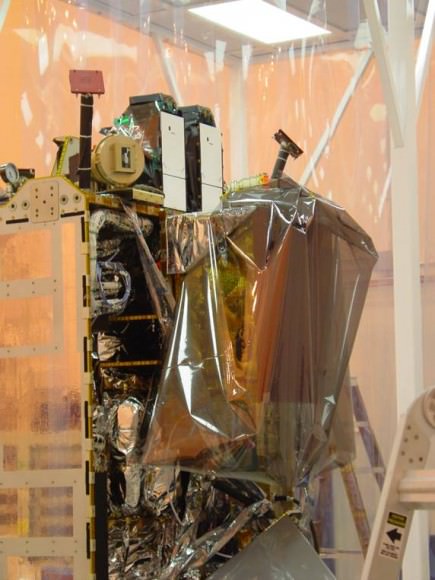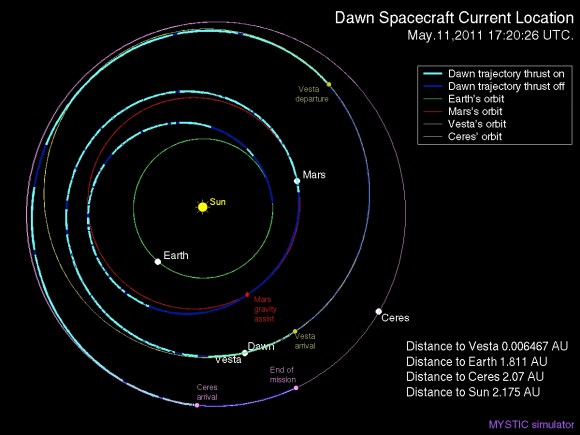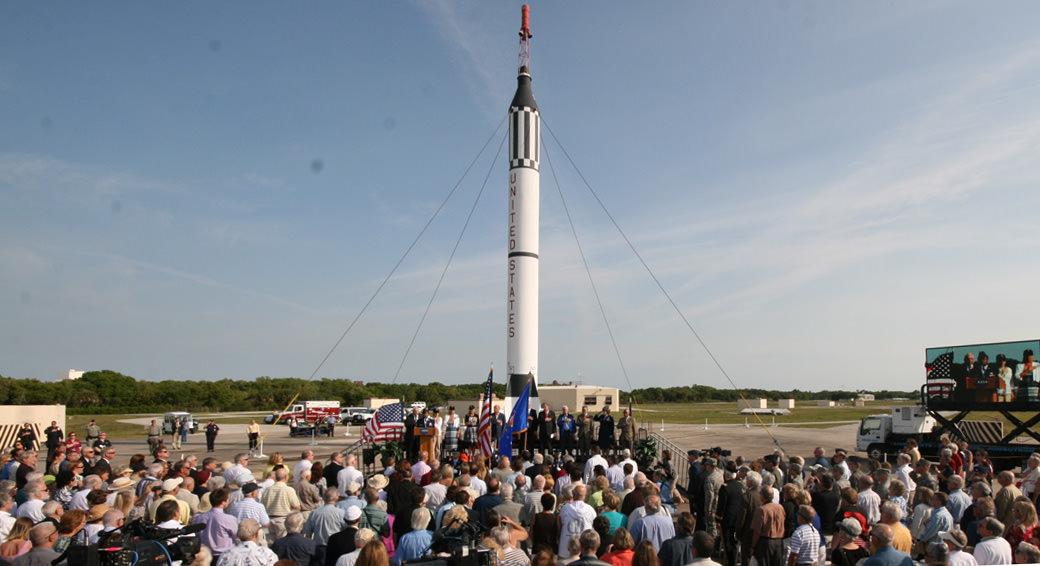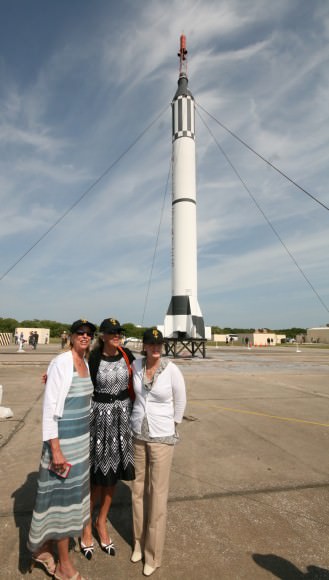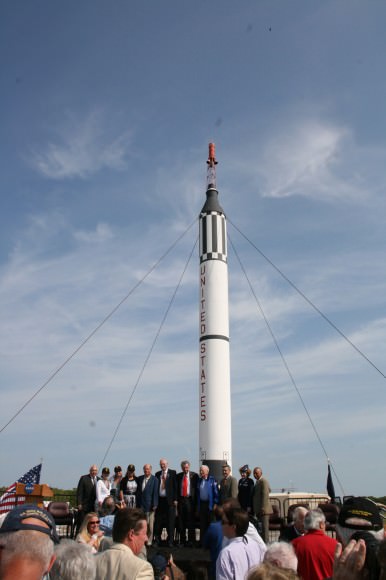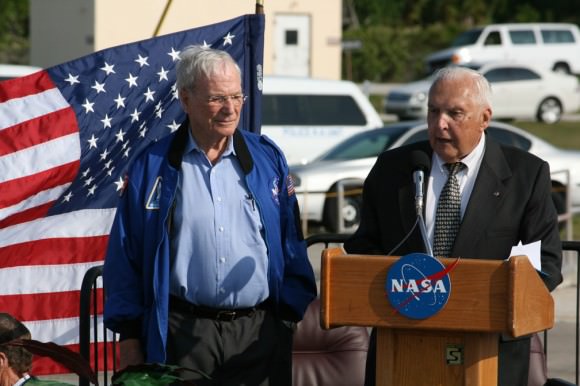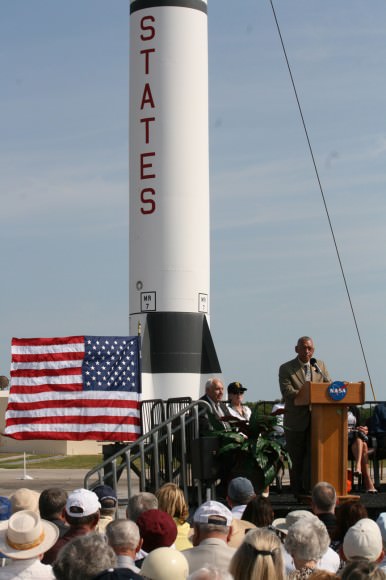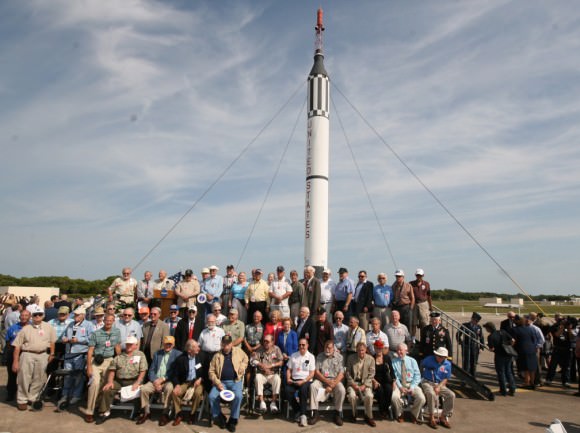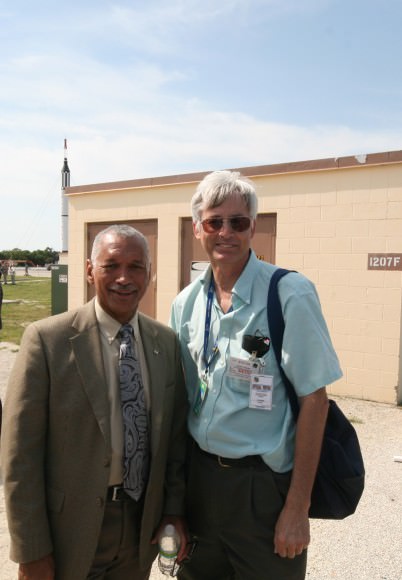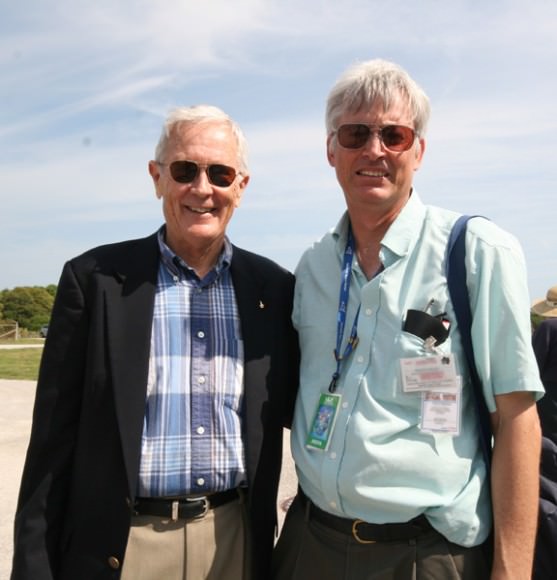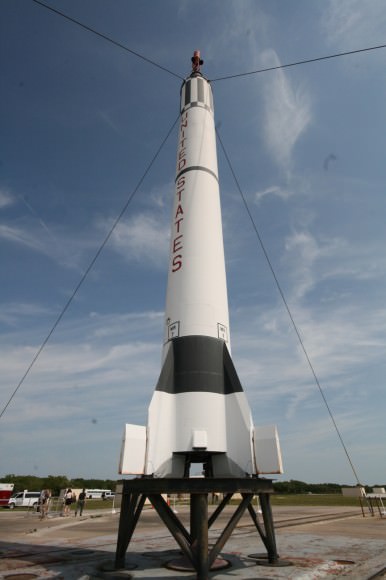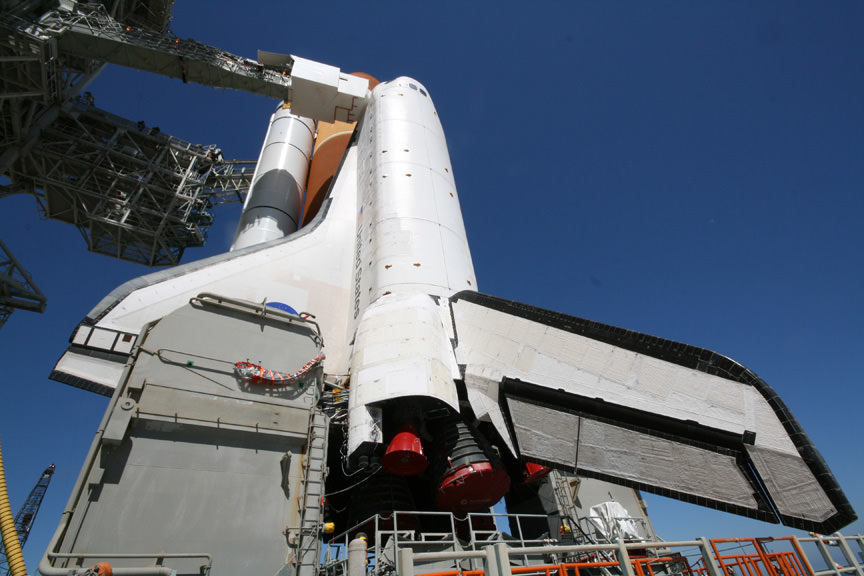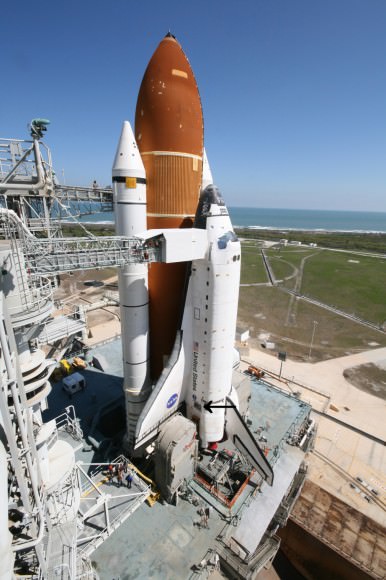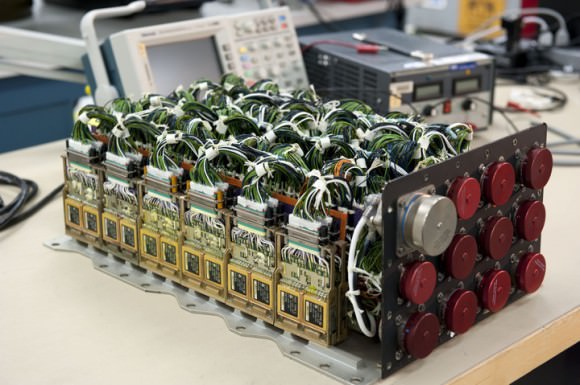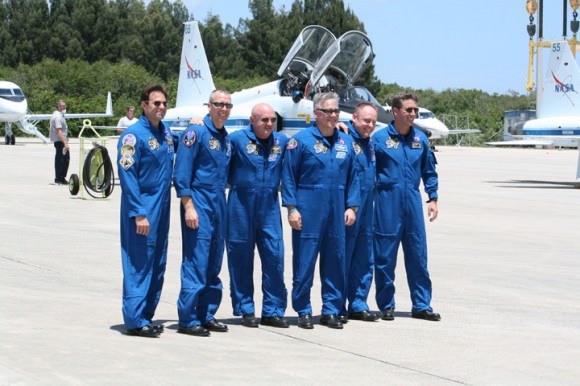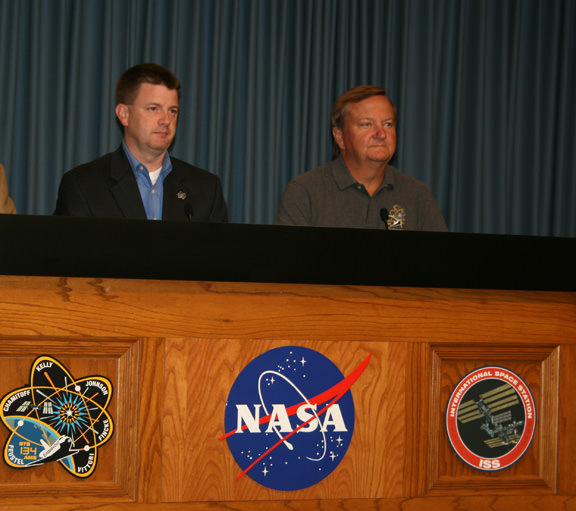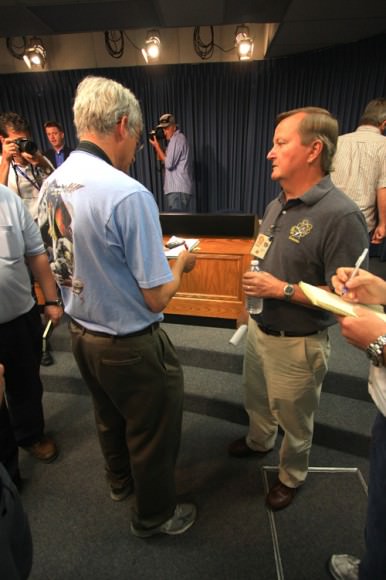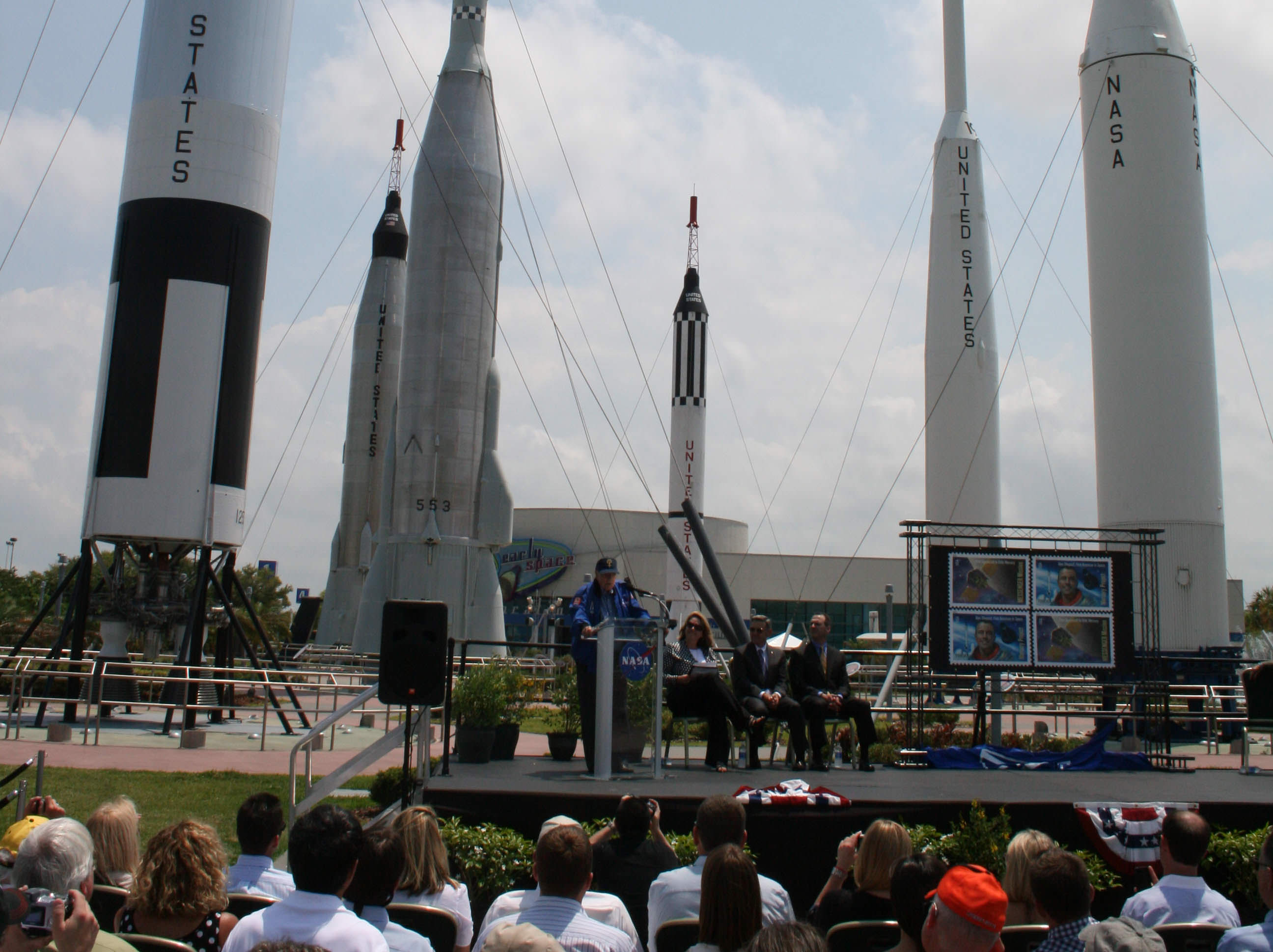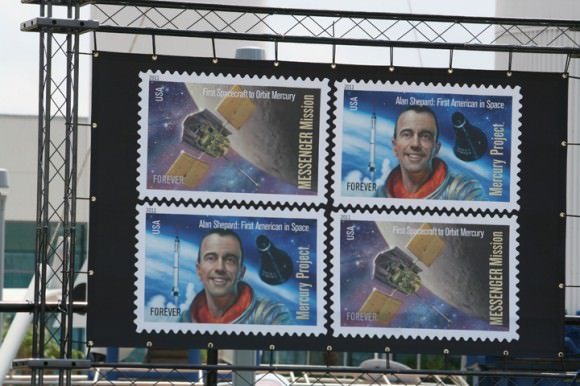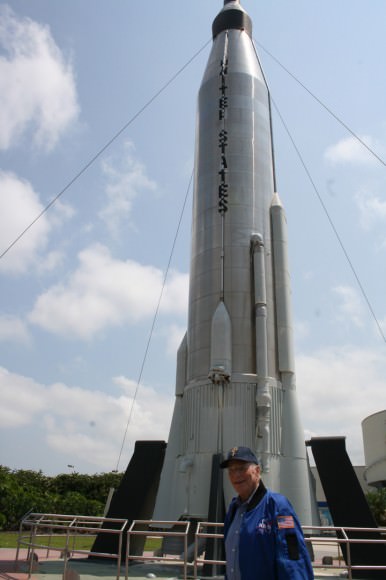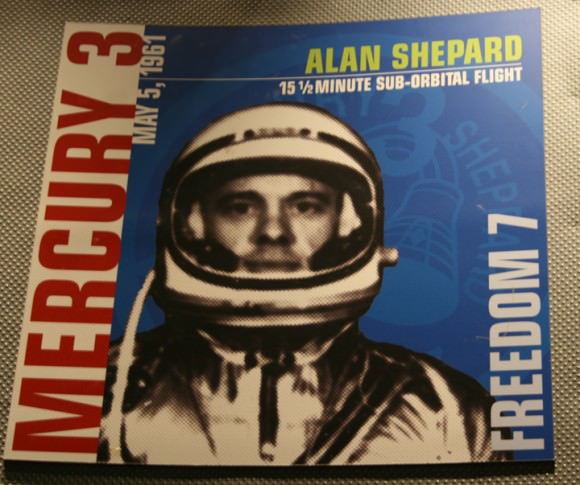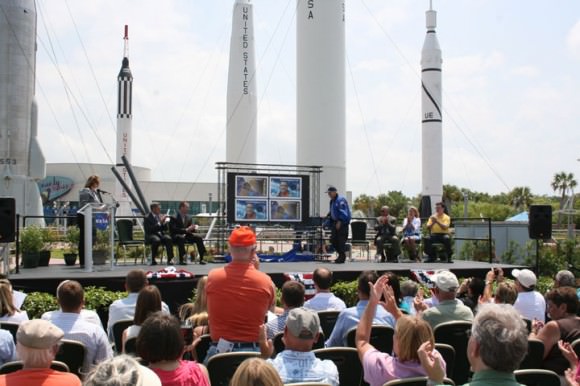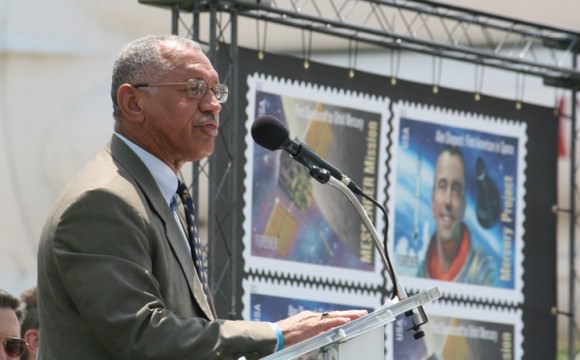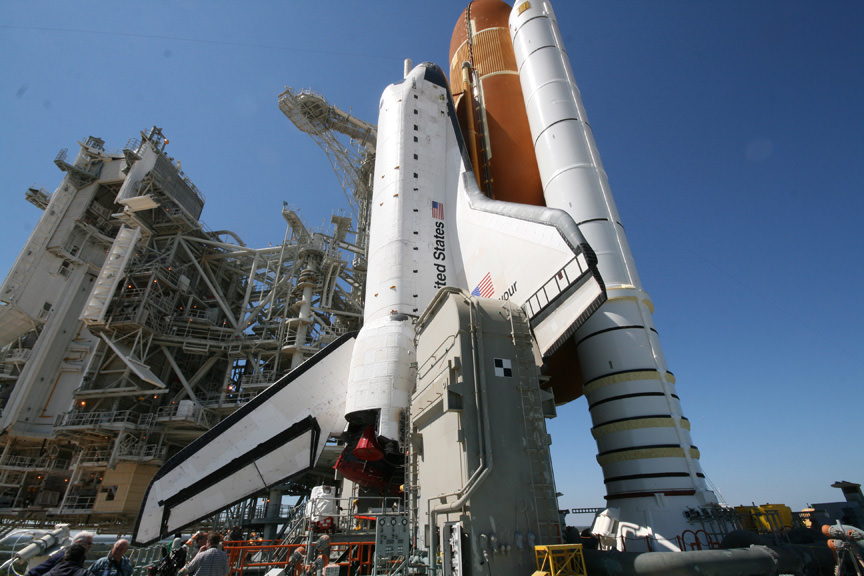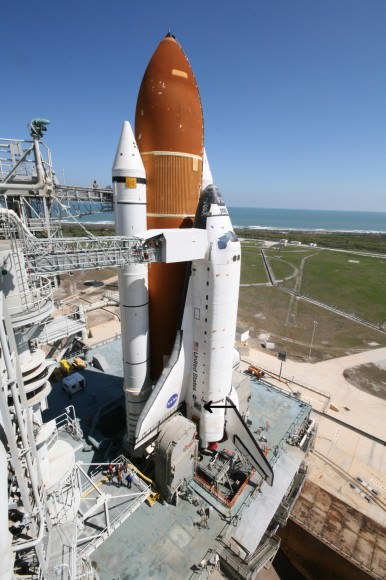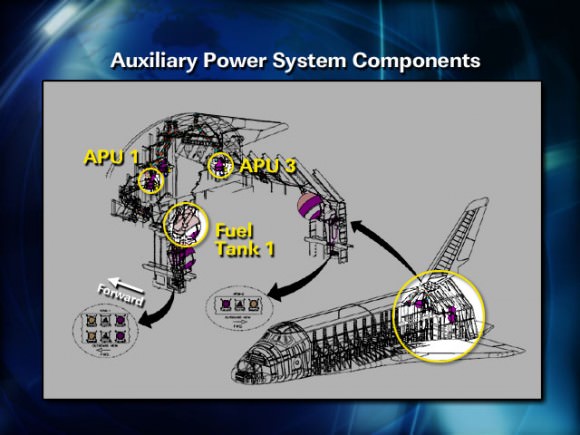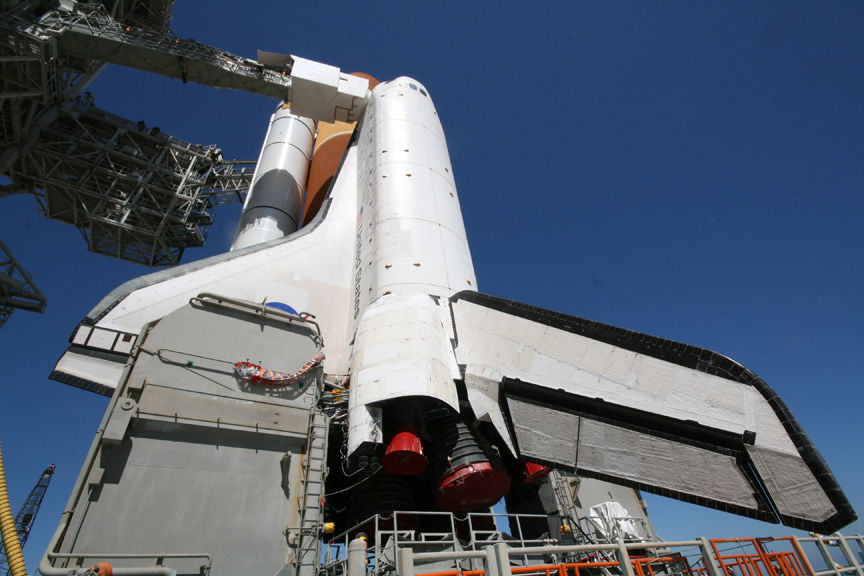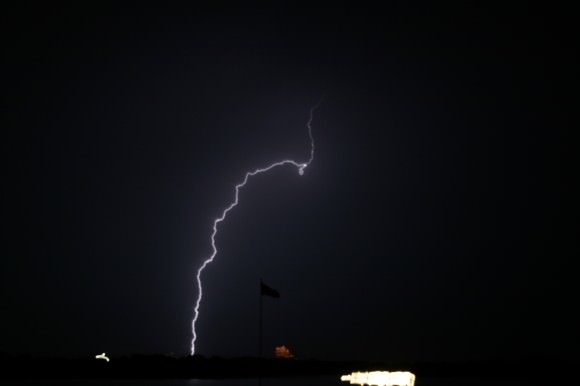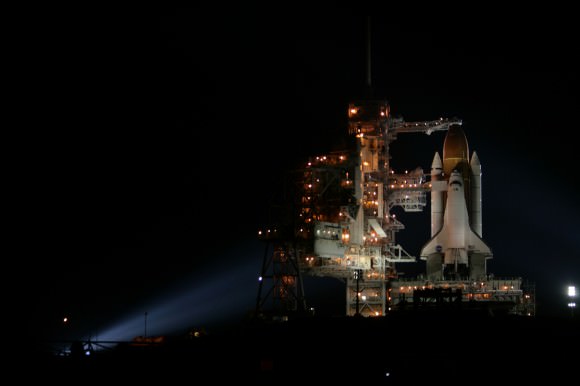[/caption]KENNEDY SPACE CENTER – The second time was a charm for Space Shuttle Endeavour as she blasted off this morning (May 16) from Pad 39 A at the Kennedy Space Center on her historic final mission under overcast skies after a two week delay caused by a heater malfunction in the orbiters critical hydraulic fuel lines.
The threatening clouds moved in over the pad in the last 30 minutes of the countdown and nearly derailed the launch. Forecasters had predicted a 70 chance of favorable conditions.
The Universe Today team of Ken Kremer and Alan Walters witnessed Endeavour’s exciting launch from the press site next to the world famous countdown clock. Check out our photo album here.
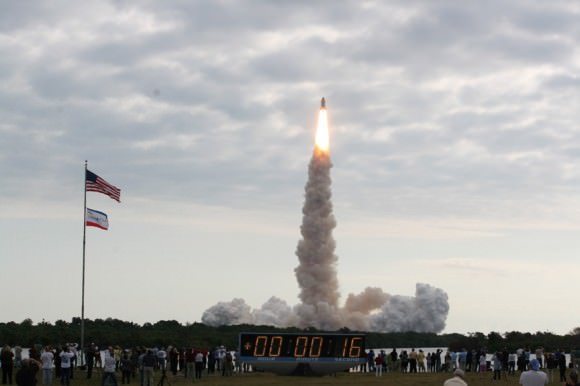
to determine the birth of the Universe. Credit: Ken Kremer -www.kenkremer.com
Shuttle Commander Mark Kelly and his five crewmates lifted off at 8:56 a.m. EDT Monday on the STS-134 mission which will deliver a state of the art particle physics detector to the International Space Station.
The $2 Billion Alpha Magnetic Spectrometer (AMS) could potentially revolutionize our understanding of how the Universe was born and evolved over time. The AMS is a world class science instrument sponsored by the United States and 15 countries around the globe. Nobel Prize Winner Samuel Ting of MIT leads the international science project.
Endeavour’s three main engines roared to life six seconds before the twin Solid Rocket Boosters were ignited and pushed the shuttle off the pad atop a tremendous roar and brilliant flames shooting from Endeavour’s tail.
The blastoff was flawless and majestic. Endeavour disappeared into the clouds at about T plus 25 seconds
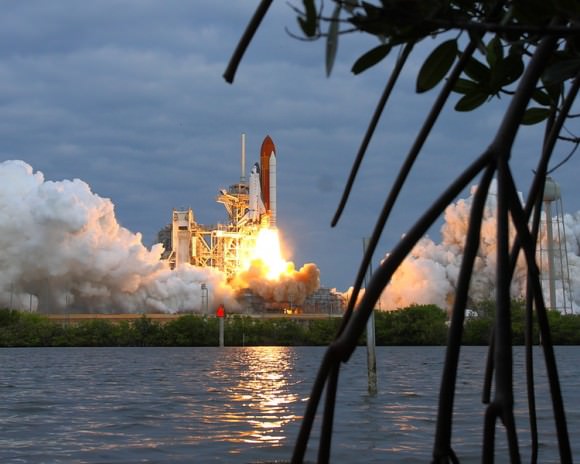
Nearly half a million people flocked to the Florida Space Coast to be a part of history and witness the launch of Shuttle Endeavour on her 25th and final mission to space. Many hotels were sold out for the night.
Numerous folks staked out their claim to a prime view location along area waterways and beaches by camping out for the night or by arriving many hours early to avoid the crush and clogged local roadways.
Kelly’s crewmates are Pilot Greg H. Johnson and Mission Specialists Mike Fincke, Drew Feustel, Greg Chamitoff and Roberto Vittori of the European Space Agency. This is the first shuttle flight for Fincke and Vittori.
“This mission represents the power of teamwork, commitment and exploration,” Commander Mark Kelly said shortly before liftoff. “It is in the DNA of our great country to reach for the stars and explore. We must not stop. To all the millions watching today including our spouses, children, family and friends, we thank you for your support.”
Both Finke and Vittori flew to space atop Russian rockets on their prior spaceflights. Vittori will be the last international astronaut to fly aboard a shuttle.
Endeavour is slated for a 16 day mission to the International Space Station which will include the final four spacewalks for the space shuttle program.
The STS-134 mission is the penultimate flight of the shuttle program and the 25th and final one for shuttle Endeavour, NASA’s youngest Orbiter.
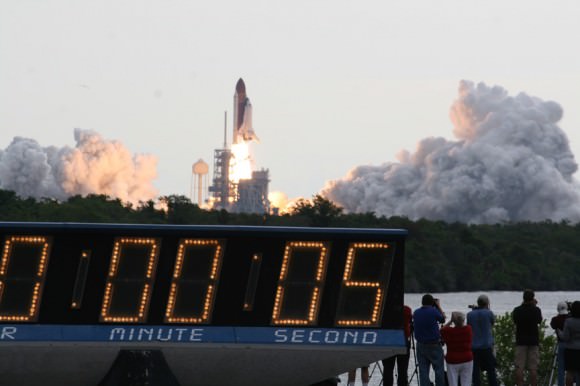
If you watched Endeavour’s May 16 blastoff, send me your launch and crowd photos to post in an STS-134 launch gallery here at Universe Today.
Read my related stories about the STS-134 mission here:
Endeavour Unveiled for Historic Final Blastoff
Looking to the Heavens with Endeavour; Launch Pad Photo Special
Endeavour Astronauts Arrive at Cape for May 16 Launch
NASA Sets May 16 for Last Launch of Endeavour; Atlantis Slips to July
Endeavour’s Final Launch further delayed another Week or more
On the Cusp of Endeavour’s Final Flight
Brush Fires Erupt at Kennedy Space Center during Endeavour’s Last Countdown
Commander Mark Kelly and STS-134 Crew Arrive at Kennedy for Endeavour’s Final Flight
President Obama to Attend Endeavour’s Last Launch on April 29
Shuttle Endeavour Photo Special: On Top of Pad 39A for Final Flight
Endeavour Mated to Rockets for Last Flight Photo Album
Endeavour Rolls to Vehicle Assembly Building for Final Flight
